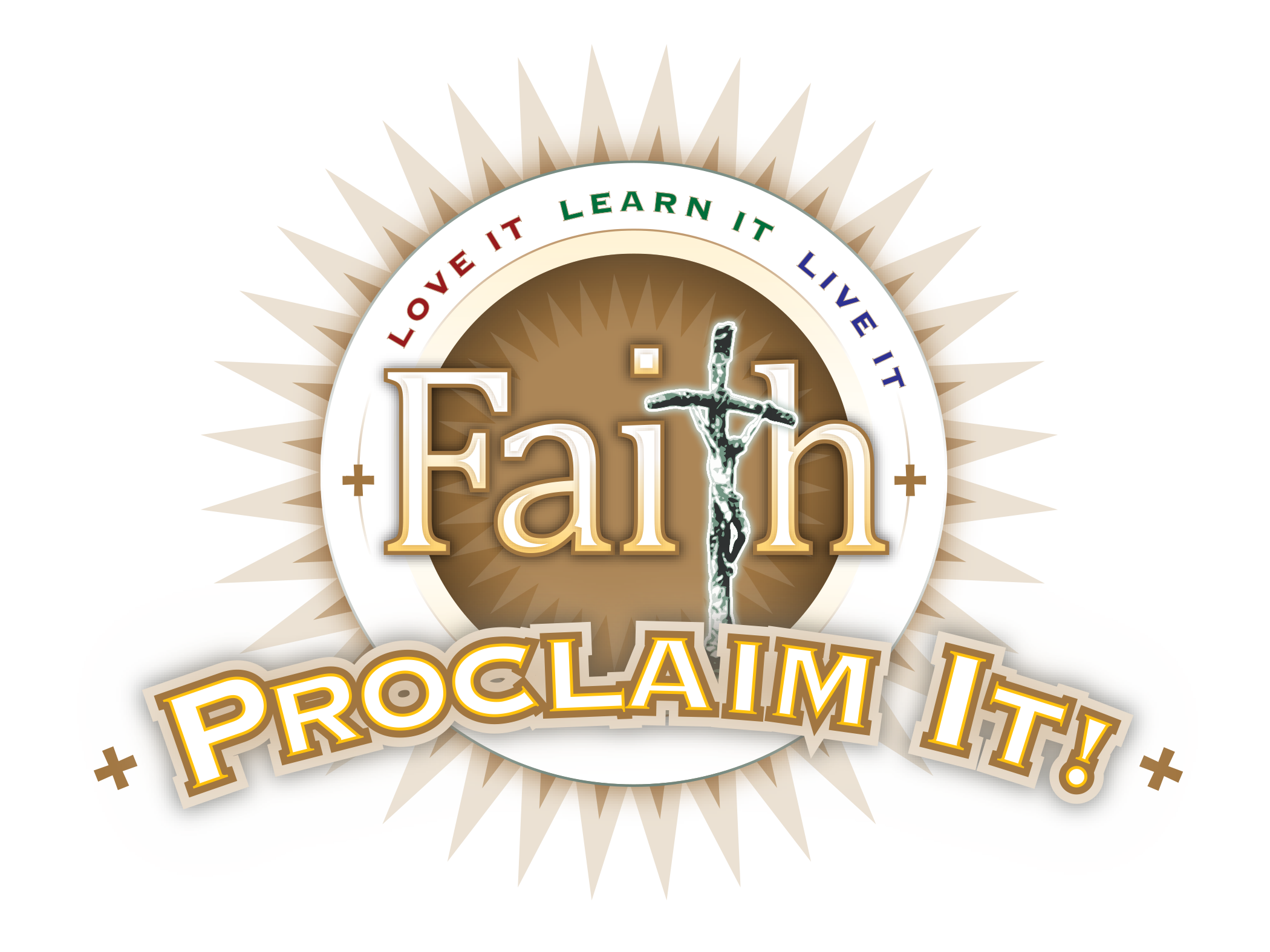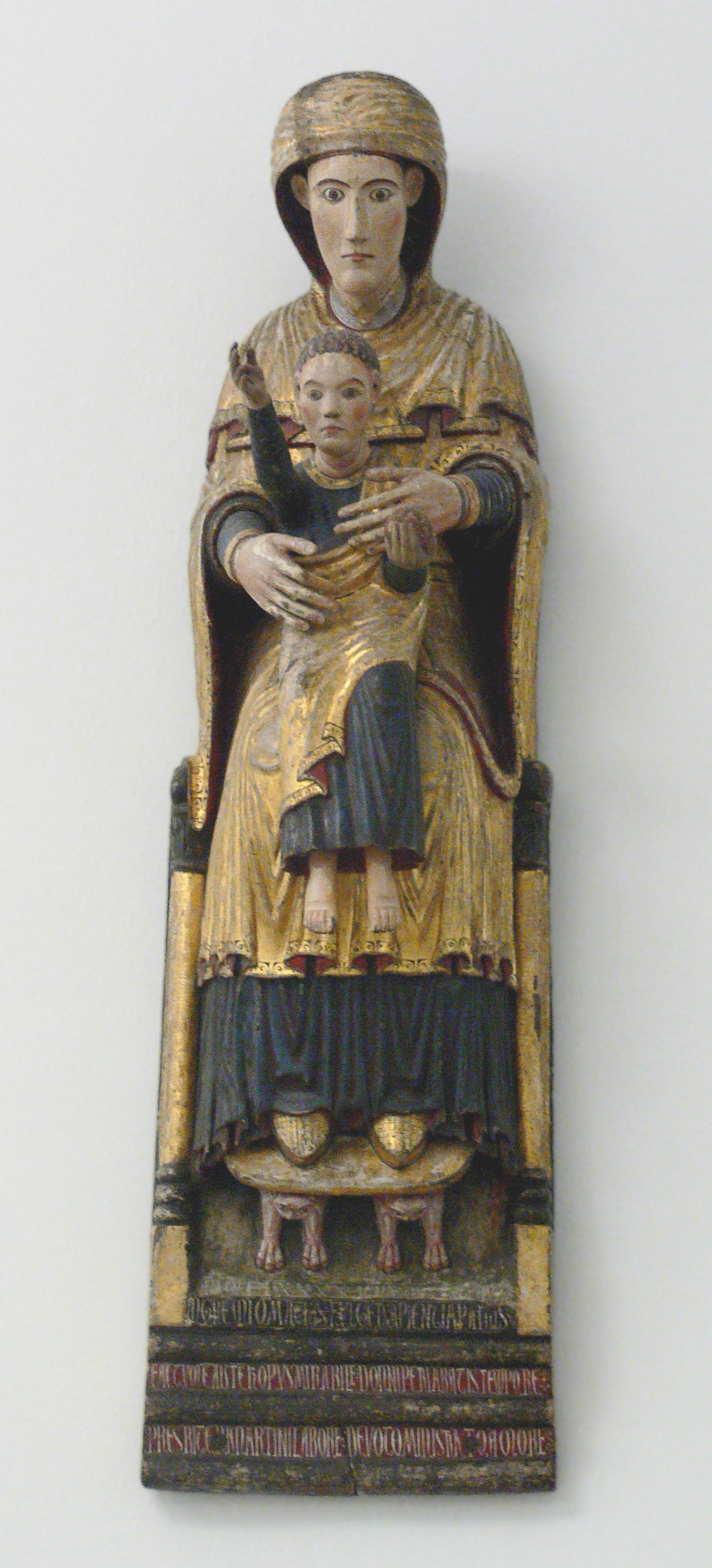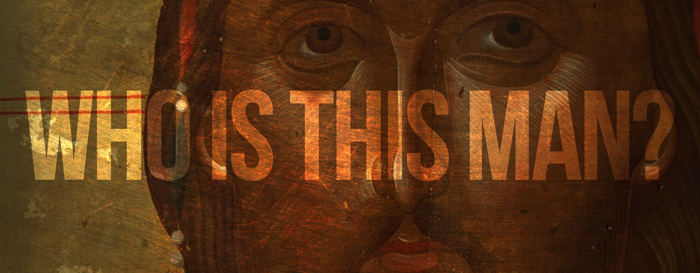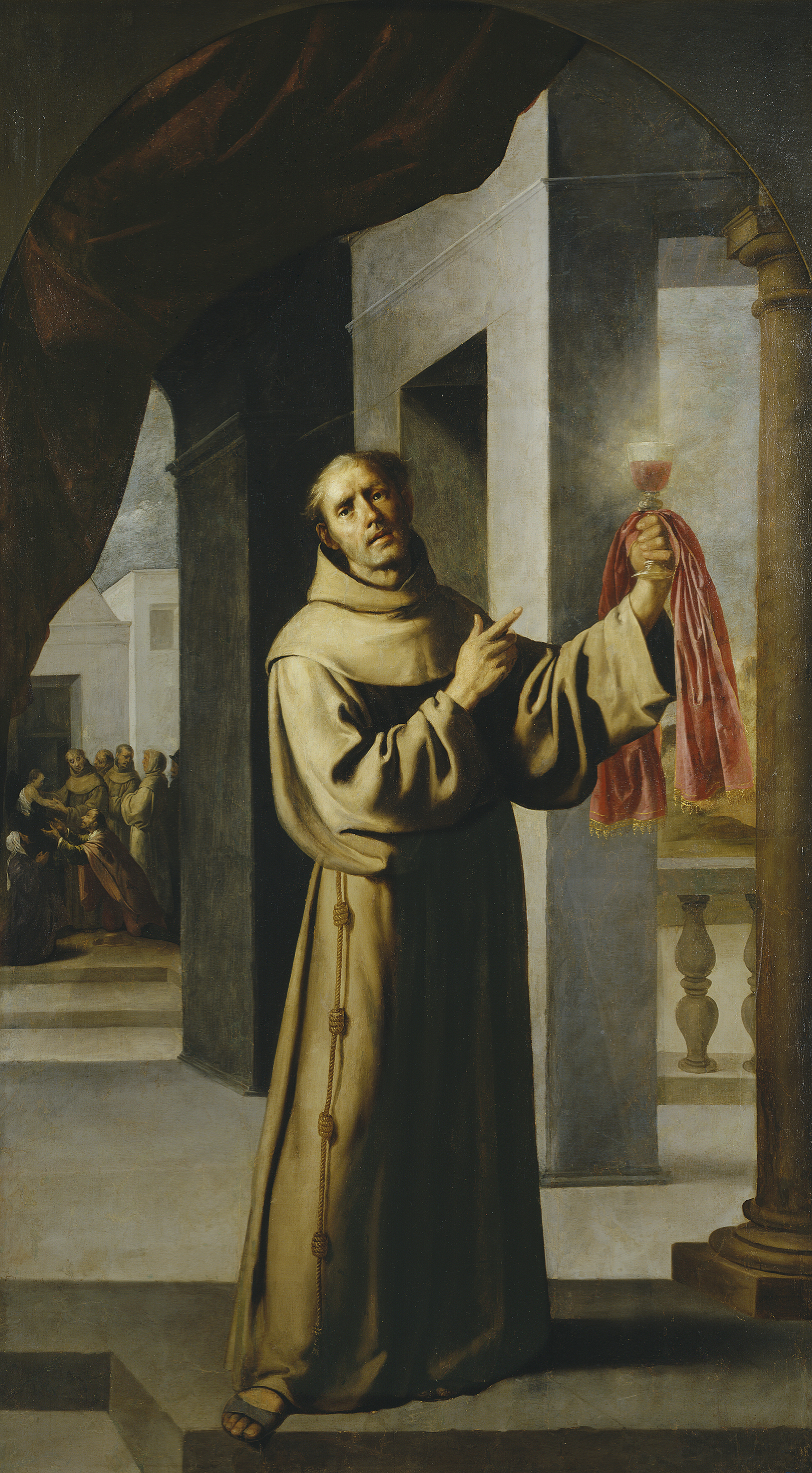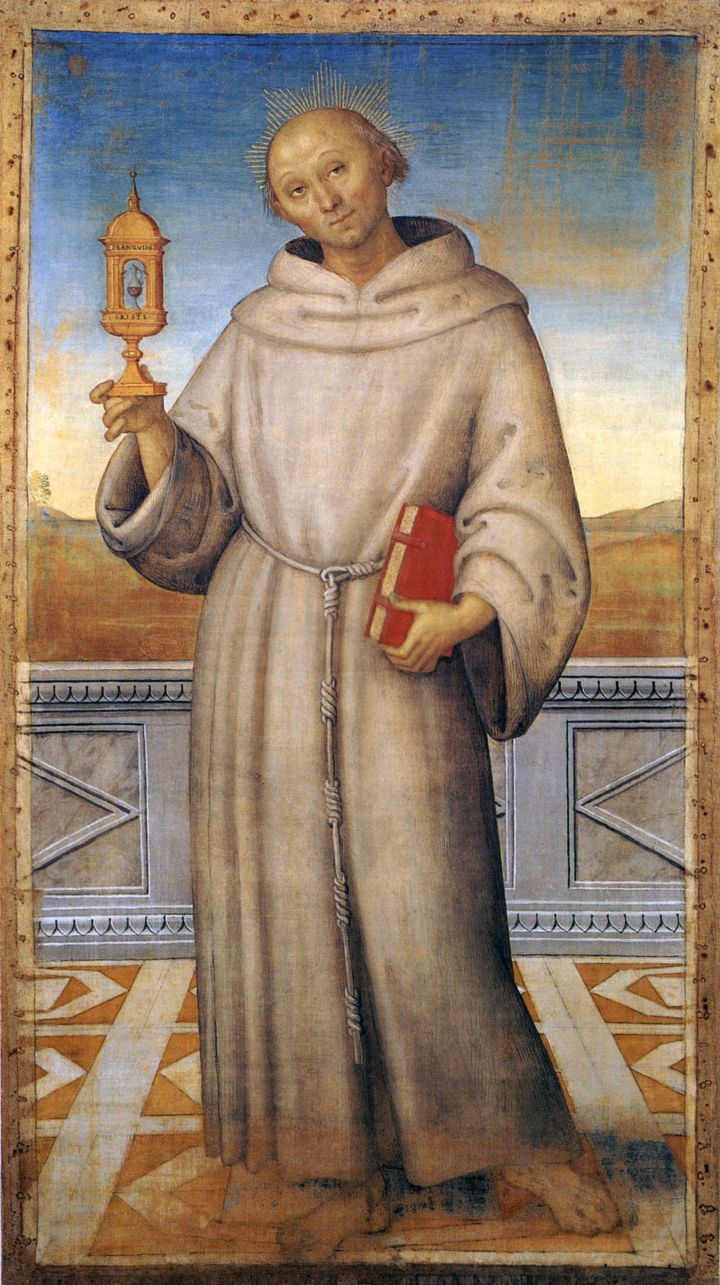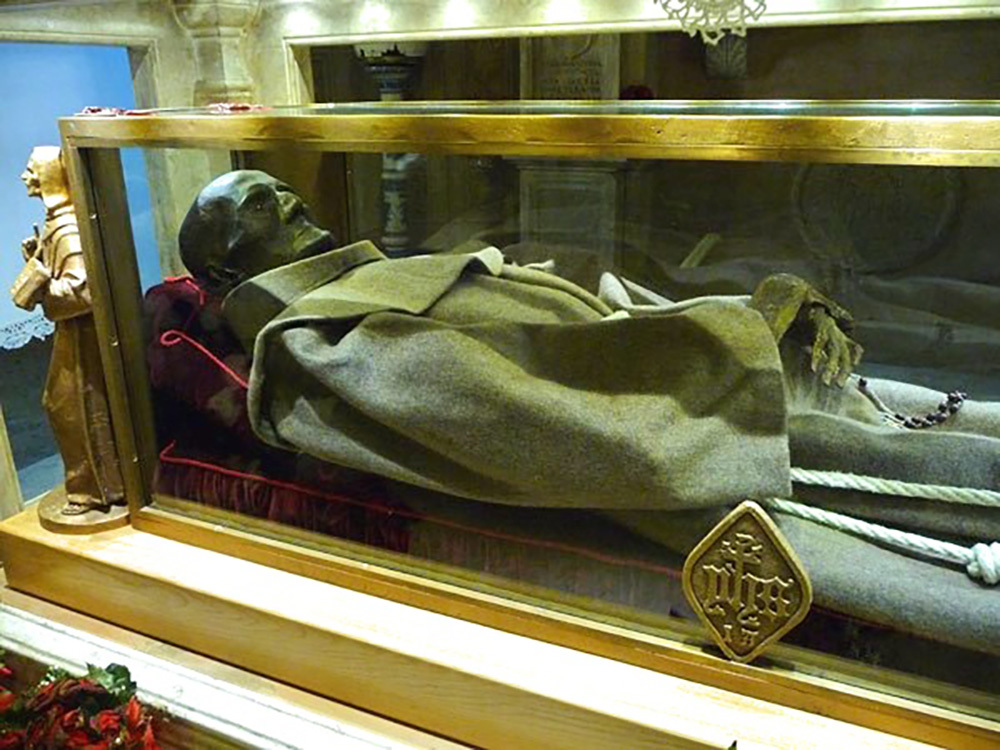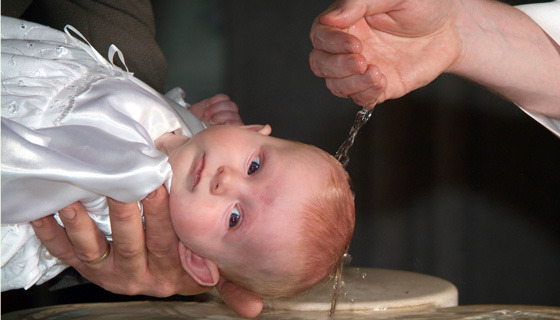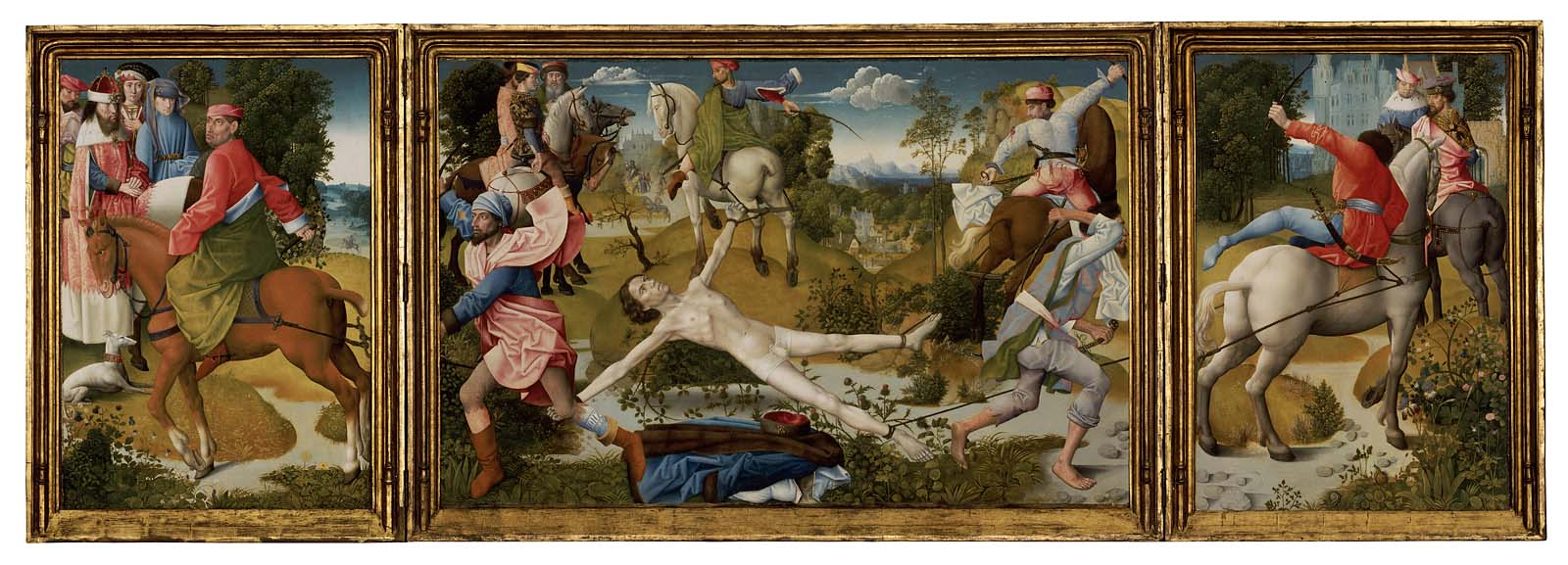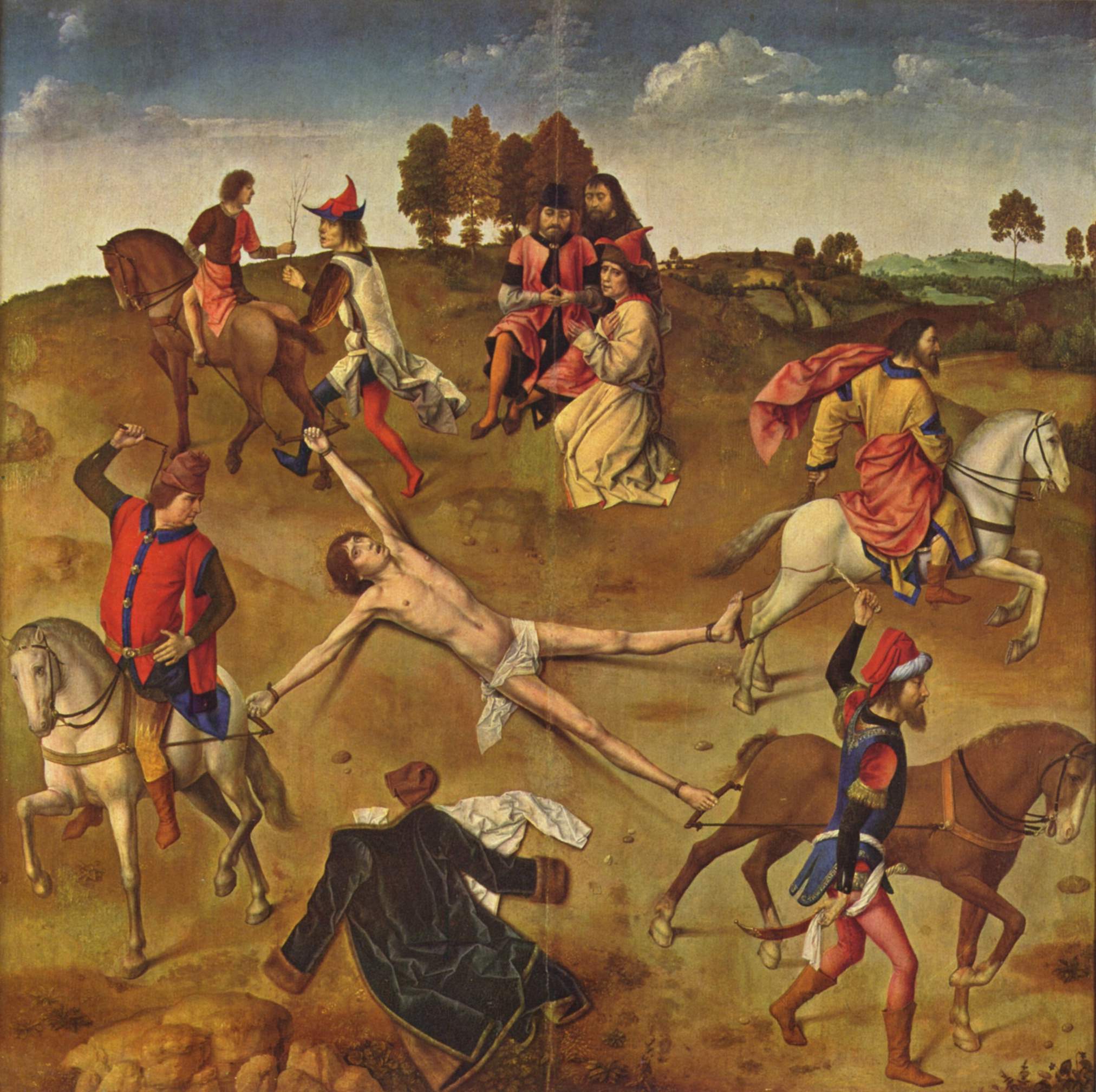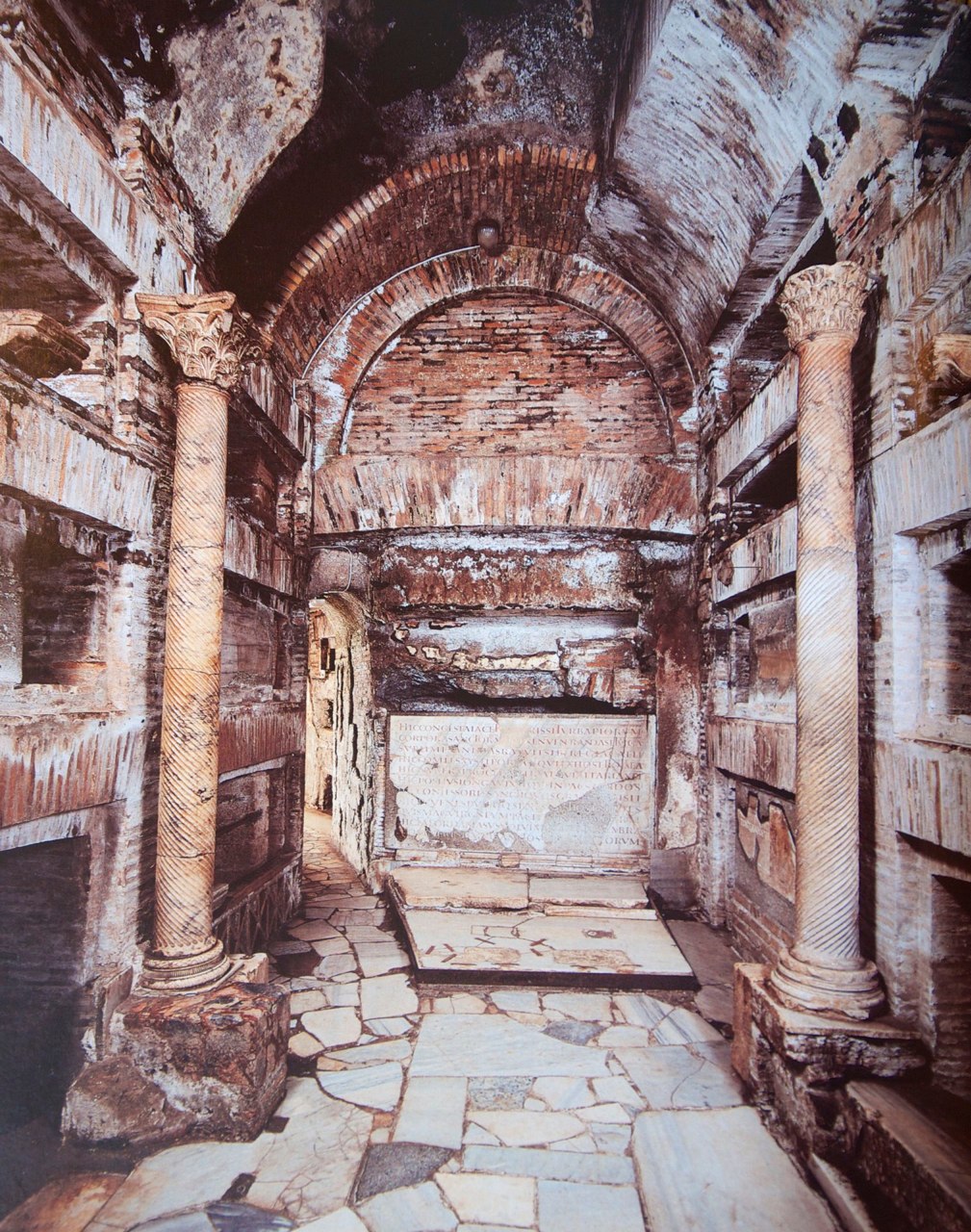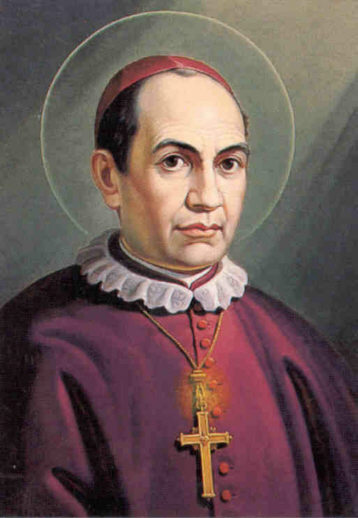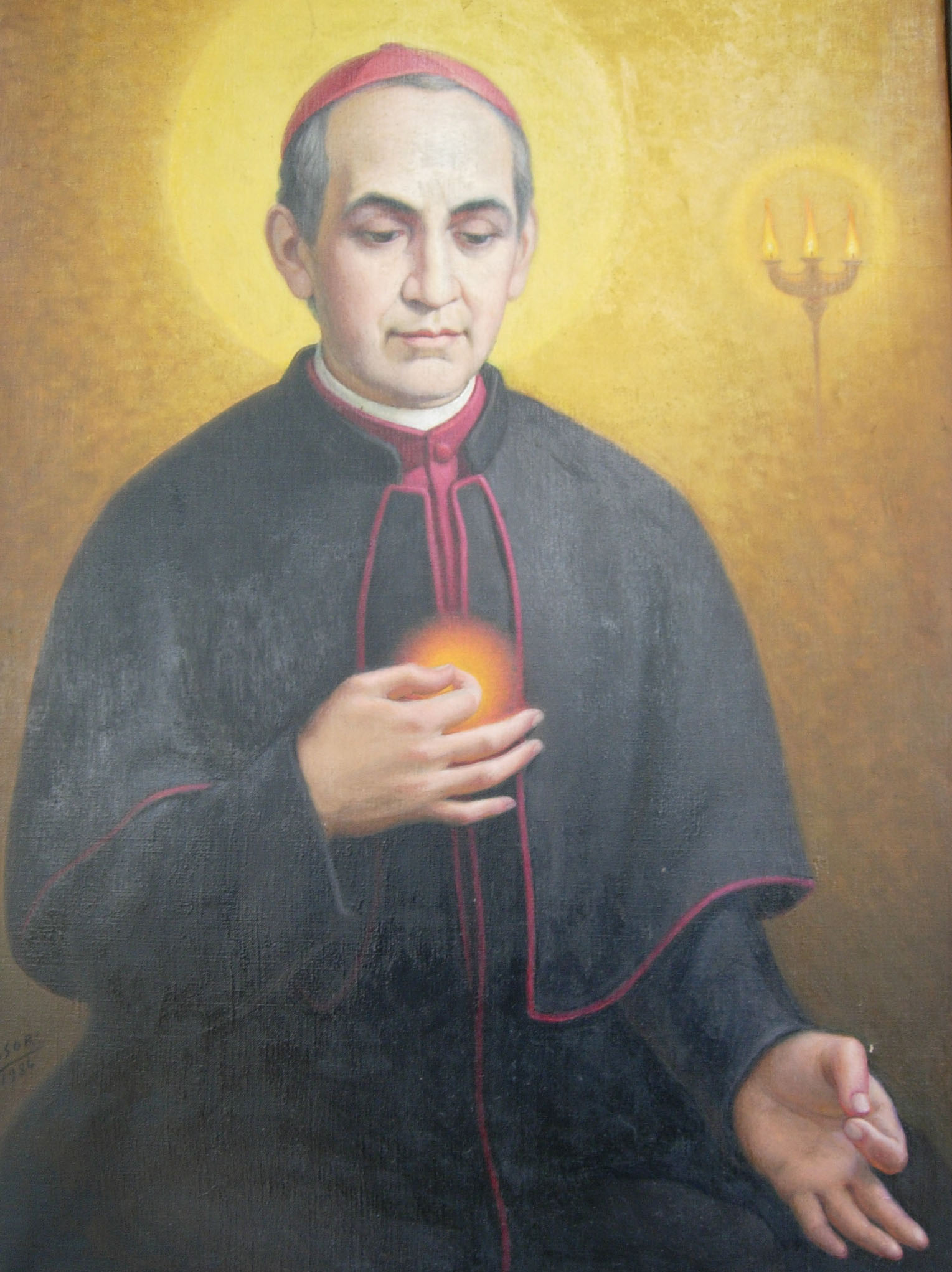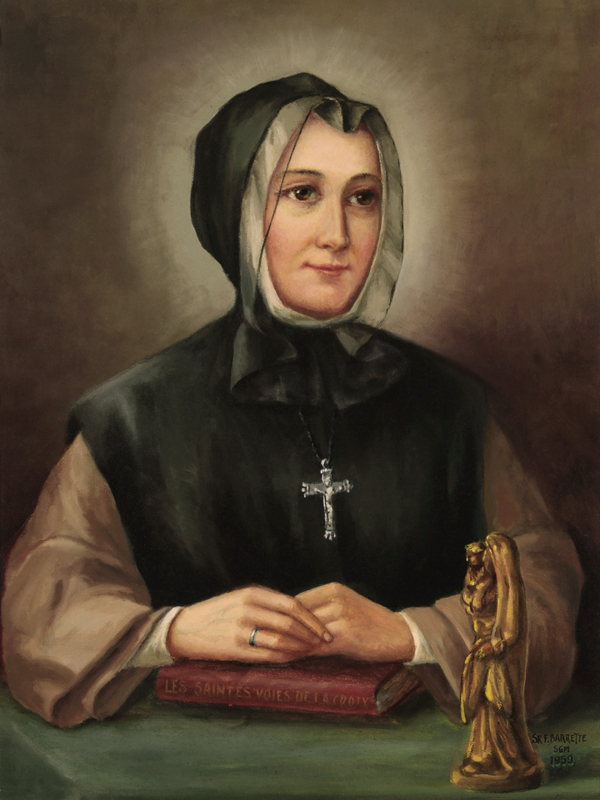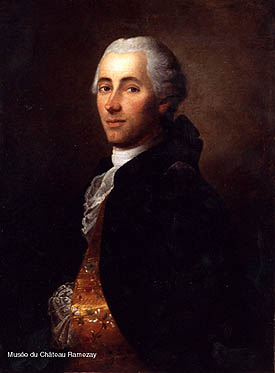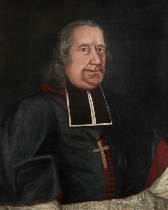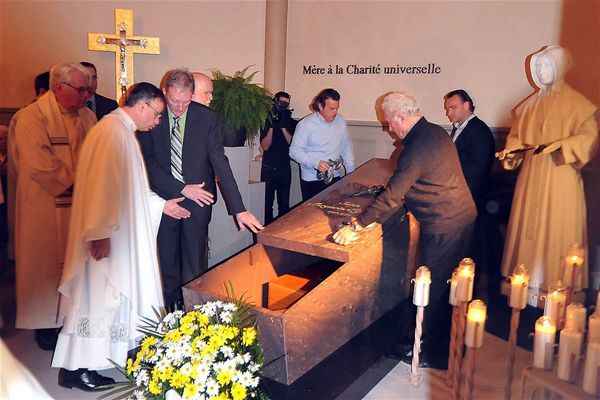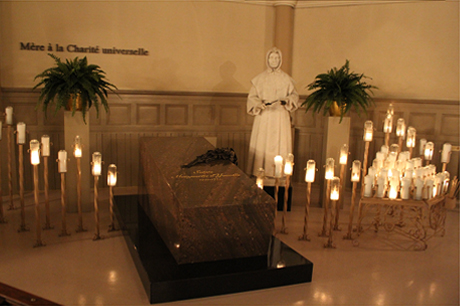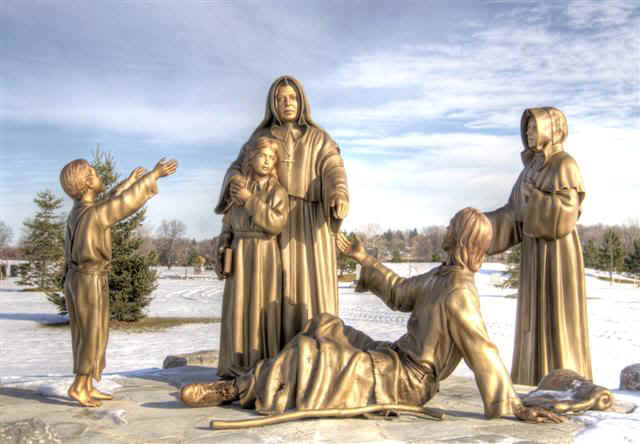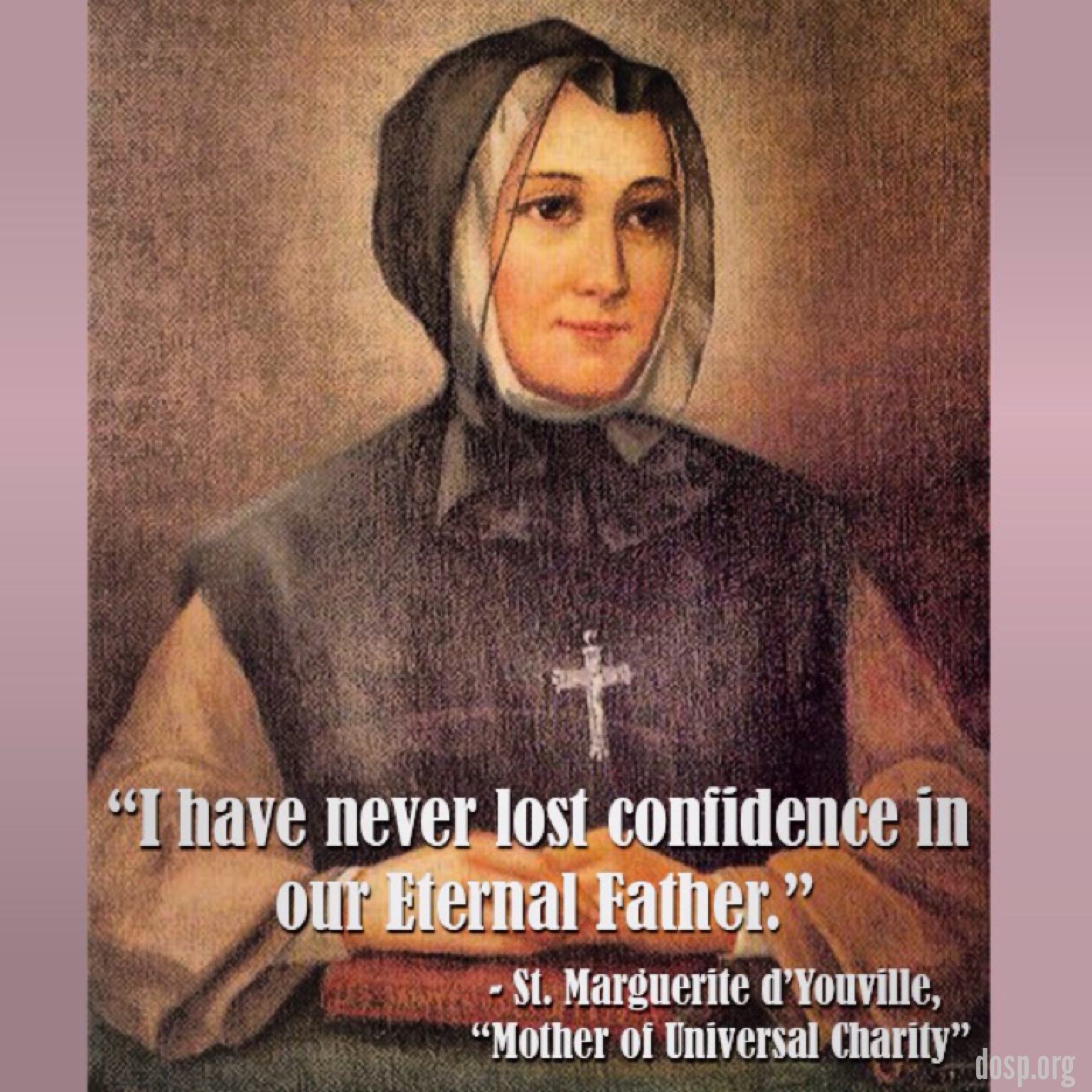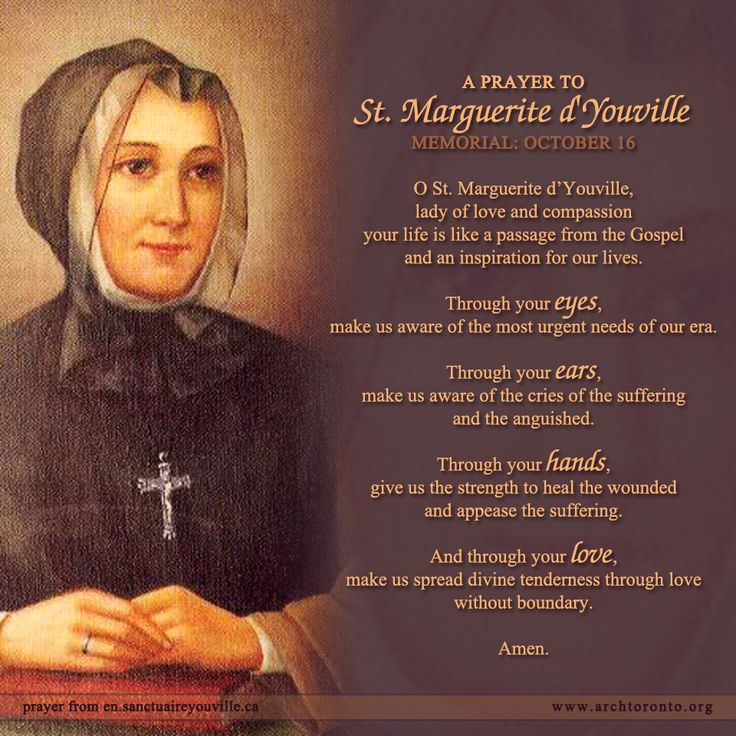Having been a Dominican novice, I still keep my ear tuned to Dominican thought. The Order that brought you the Inquisition. Tomas Torquemada, OP, pray for us! My Jesuit friends will never forgive me/understand. Thank God (& DARPA) for the Internet, no?
Dr. Carole Brown, PhD, is an expert on the thinking of JPII and the New Evangelization. Dr. Brown, is the eldest of five children and grew up on a cattle ranch in western South Dakota. Carole has been involved in youth and young adult ministry all her adult life. She acquired bachelors degrees in communications and education from Black Hills State University in 1994 and earned her Masters Degree in theology from Franciscan University of Steubenville in 1997. She went on to work at Steubenville for eight years as the Director of Evangelistic Outreach. In 2004, Carole spent a year on mission with Kerygma Teams in Vienna, Austria. Kerygma Teams is a branch of Youth with a Mission, an interdenominational missionary outreach team of lay missionaries. Kerygma Teams operate in primarily Catholic areas. Subsequently, she moved to Ireland, where she completed a PhD in Systematic Theology in 2010. Her dissertation is entitled “Crossing the Threshold of Faith: Pope John Paul II’s Approach to the Problem of the Conversion of the Baptized.” She currently lives in Dublin, where she works as the speech content editor for Ireland’s first national Christian radio station, Spirit Radio.
As a catechist for adults, I cannot resist the New Evangelization. What is the New Evangelization? It is believed that Blessed John Paul II first used the term in 1983 in an address to Latin American Bishops. He would later bring this term to the attention of the entire Church. Perhaps, the most clear definition of the New Evangelization is in his encyclical, Redemptoris Missio. In section 33 of this encyclical, Blessed John Paul II describes three different situations for evangelization: mission ad gentes, Christian communities, and the new evangelization.
Mission ad gentes: Latin for “to the nations.” This is a situation where “Christ and his Gospel are not known.”
Christian communities: “In these communities the Church carries out her activity and pastoral care.” This is the ongoing evangelization of those “fervent in the faith.”
New Evangelization: So, what is the new evangelization? Blessed John Paul II describes a situation between the first two options “where entire groups of the baptized have lost a living sense of the faith, or even no longer consider themselves members of the Church, and live a life far removed from Christ and his Gospel. In this case what is needed is a ‘new evangelization’ or a ‘re-evangelization.’”
The new evangelization pertains to a very specific group of people: fallen-away Christians. For most Catholics in the western world, we see the need for this type of evangelization all around us. Everyone knows someone who was once baptized but who no longer practices the faith. Blessed John Paul II wanted the faithful to clearly recognize this problem and then try to solve it.
Pope Benedict has continued the mission of the new evangelization in his pontificate. In 2010, Pope Benedict established The Pontifical Council for the New Evangelization. In 2012, he declared a Bishops’ Synod to discuss the New Evangelization.
http://www.ewtn.com/new_evangelization/index.htm
“U.S. Marines have a code of honor: no one gets left behind—not even the fallen on the battlefield. They are bound together in brotherhood. Their commitment to this code enables Marines to act with courage and valor. Similarly, as baptized Catholics we form a bond as God’s family and pledge to accompany any child of God through conversion. In a culture hostile to the faith, we must exercise Marine-strength courage to remain vigilant for those who fall away.
How well are we keeping that pledge? Admittedly, too many baptized and confirmed Catholics fall away from the faith without taking hold of the treasure of our faith and its promise of eternal life. They are dying on the battlefield, spiritually speaking. Statistics in this regard are nothing short of alarming, with Catholics experiencing the greatest net loss due to changes in affiliation.[1] An estimated 70% of young Catholics no longer practice their faith by the time they reach adulthood.[2] Do we strategically think about the way in which our “baptismal training” equips people to survive spiritually in a toxic secular culture? Are we praying vigilantly for their return and going in search of them?
One of the reasons that many of our baptized people do not survive with their faith intact is that “basic training” for becoming a disciple—personal conversion to Jesus Christ, personal relationship with him—is a neglected dimension of Catholic formation. Children baptized in infancy come to the parish for catechesis, and we work hard to communicate the content of the faith; but we often fail to put them in touch with—in intimacy with—the person of Jesus Christ, which Pope St John Paul II said is the “definitive aim of catechesis.”[3] In our concern to communicate Christian doctrine effectively, we sometimes overlook the fact that baptized people may not yet know Jesus Christ enough to care about what he taught.
In this article, I will set forth a small offering of some principles and practices by which we can create conditions that favor personal conversion amidst the secular culture. This is less about developing new programs (though this can be helpful) than about applying these principles and practices in ministries that already exist. First, I will set forth a number of principles drawn from the teaching of recent popes, who are the architects of the New Evangelization. These will be followed by four kinds of practice.
Principles of Initial Evangelization
1. The Holy Spirit is the principle agent of evangelization. Foster devotion to him, and promote those means that help people not only to know about him but also to experience his power.
2. The Church exists to help people to find Jesus Christ. Pope St. John Paul II wrote, “The Church wishes to serve this single end: that each person may be able to find Christ, in order that Christ may walk with each person the path of life…”[4] That may seem obvious at first glance, and yet statistics have shown that only 60% of Catholics believe in a personal God.[5] In what ways is the energy of our parish directed to bringing people into contact with God in a personal way? Just because people come to Church does not mean that they have found Christ. Pope Francis has cautioned us about being a self-referential church. The goal is not just to get people in the Church but also to help them to encounter Jesus Christ.
3. Faith in Jesus is both personal AND communal. We have perhaps relied too much on the communal dimension of faith, which becomes increasingly more anemic as the personal aspect is neglected. Personal faith in Jesus Christ does not replace communal faith, but rather enlivens it. By the same token, a community comprised of people who are living in a continual personal relationship with Jesus Christ will be most enriching to the persons who associate themselves with that community. On the other hand, a community comprised primarily of people who do not experience their faith in Jesus Christ in a personal way will tend to be impersonal, lonely, superficial, anonymous—and boring.
4. Converting the culture begins by converting persons. Every movement begins with a slow groundswell. People whose lives have been touched by Jesus Christ tend to recognize that other people need to have this experience too, and look for ways and means to bring people into this experience.[6] This can happen in programs but also, perhaps even more importantly, in the context of interpersonal relationships.
5. Faith needs the support of reason. Many young people today are preparing themselves for careers in engineering, medicine, journalism, and law, requiring strong reasoning skills. Yet many capable young people have never been exposed to such treasures as St Thomas’ Five Proofs of the Existence of God, or CS Lewis’ argument for the divinity of Christ. Leaving them without solid reasons for belief is like sending a Marine into battle without weapons.
6. The power of the sacraments is not automatic but released by the assent of the person. Once they reach the age of reason, people baptized in infancy must be evangelized and brought to a place of personal assent, in order for the sacraments to bear their intended fruit.[7] John Paul II said it well when he wrote, “Conversion means accepting by a personal decision, the saving sovereignty of Christ, and becoming his disciple.”[8] Coming under the saving sovereignty of Christ is a lot like falling in love—and this love releases the energy for the moral life[9] and enables us to accept the cross.
Bearing these principles in mind, now let us examine some methods that foster personal conversion.
Ways to Create Conditions that Favor Conversion
1. Conversion begins as a response to the Word of God. In what ways is the Word delivered to people?
Kerygma: The initial proclamation of the Gospel is “the permanent priority of mission” and has a “central and irreplaceable role, since it introduces man ‘into the mystery of the love of God, who invites him to enter into a personal relationship with himself in Christ and opens the way to conversion.’”[10] But many times, the centrality of the initial proclamation is lost on those who are already Catholics by baptism or culture. We must recover it! Do people in our parishes know the content of the core message of the Gospel, the kerygma? Do they know how to build relationships of trust with people, thus earning the right to proclaim it? Can they deliver it effectively in their personal relationships with family, friends, acquaintances, and co-workers?
Pope Francis recently summarized the content of the kerygma as follows: “Jesus Christ loves you; he gave his life to save you; and now he is living at your side every day to enlighten, strengthen and free you.”[11] Do you believe that personally, on more than an intellectual level? Do you know anyone for whom that would be good news? Could you memorize it, and be prepared to proclaim it to the next person who starts complaining to you?
Personal Witness: St. Paul tells us that faith comes through hearing. “The witness of a Christian life is the first and irreplaceable form of mission.”[12] Often enough, it isn’t so much the words that are said, as the tone with which they are said. If we ask our kids every night whether they’ve said their prayers, and ask it in the same tone of voice that we ask whether they’ve brushed their teeth, finished their homework, or made their beds, then what they hear is: prayer is a task on the to-do list, perhaps even a chore.
My life changed as a teenager, when a friend listened to me complaining about my problems and asked me, “Have you ever prayed about this?” Her tone of voice conveyed a certain eagerness and excitement, and suggested to me that there was a potential source of help that I had not yet discovered. That conversation got the wheels of my mind turning, provoked my curiosity, and sparked my own faith. These kinds of conversations need to take place in every possible context: faith formation settings of course, but also with altar servers in the sacristy, with fellow parishioners at the coffee hour, with our kids’ friends and their parents.
Homily: Does homily preparation have pride of place in the priest’s weekly time commitments? Does he know how to pray with the Word of God, using Lectio Divina, or Ignatian meditation to draw out the personalistic substance of God’s self-revealing word?[13] Do parishioners have the opportunity to learn these methods for prayer?
Fostering Personal Meditation on the Word: Pope Benedict XVI said, “…it is decisive, from the pastoral standpoint, to present the Word of God in its capacity to enter into dialogue with the everyday problems which people face. Jesus himself says that he came that we might have life in abundance (cf. Jn. 10:10). Consequently, we need to make every effort to share the Word of God as an openness to our problems, a response to our questions, a broadening of our values and the fulfilment of our aspirations.”[14] Unfortunately, the Bible seems like a “protestant book” to many Catholics. Fostering a personal love for God’s Word is essential to personal conversion. What concrete resources do children, teens, and adults have for accessing the Word of God for prayer and establishing a personal dialogue with him? What daily scriptural meditation materials are available, and what still needs to be done?
2. Conversion involves an experience of a personal encounter with Jesus Christ. In what ways can we foster the expectation for this encounter?
Pope Emeritus Benedict XVI said it well when he wrote, “Being Christian is not the result of an ethical choice or a lofty idea, but the encounter with an event, a person, which gives life a new horizon.”[15] What are the practices that prepare the heart for such an encounter?
Witness Testimony: Regular exposure to personal, Christ-centered witness testimony is a profoundly valuable practice in this regard. To encounter someone who has encountered Jesus arouses wonder and curiosity. Good preparation is essential. Besides the value of live testimony, what possibilities exist in various forms of media (video, radio, social networking) to expose people to real people, Catholics whose lives have been changed by Jesus Christ? For the New Evangelization, giving explicit personal witness to Jesus Christ must come to be understood as something Catholics can do.
Meditation: Regular meditation on the Word of God (above) prepares the ground for such an encounter. The Word of God is alive and active and has a way of hitting us between the eyes, if only we pray with it frequently (and not just at Sunday Mass).
Sacramental Encounters: In what ways do our children experience sacramental moments as a personal encounter with Jesus? Particularly in the Sacraments of Eucharist and Reconciliation, in what ways can we intentionally foster this sense of a personal encounter with the Lord? Pope John Paul II encouraged us to foster the experience of “Eucharistic ‘amazement.’”[16] My friend asked her young charges which of them had seen the movie Spiderman. She then referred to the fact that Spiderman was really Peter Parker in disguise. Jesus, she explained, also has a disguise—he disguises himself as bread, but it’s actually Jesus. These children were delighted with this discovery and soon began to visit Jesus at church after school. Parents can foster this amazement by attending adoration with their children, or when stopping by the tabernacle together after Mass to leave their prayers with him.
Likewise, the Sacrament of Reconciliation is a tremendous encounter “with Christ saying, through the minister of the sacrament of Reconciliation: ‘Your sins are forgiven’; ‘Go, and do not sin again.’…this is also a right on Christ’s part with regard to every human being redeemed by him: his right to meet each one of us in that key moment in the soul’s life constituted by the moment of conversion and forgiveness.”[17]
These two sacraments enable a person to remain in right relationship with God in order to be in communion with him.
Non-Sacramental Encounters: In what non-sacramental ways can we develop the consciousness of living out a personal relationship with the Lord during the rest of the week? For example, the Catechism of the Catholic Church teaches us: “To pray ‘Jesus’ is to invoke him and to call him within us. His name is the only one that contains the presence it signifies. Jesus is the Risen One, and whoever invokes the name of Jesus is welcoming the Son of God who loved him and who gave himself up for him.”[18] Placing ourselves in the presence of Jesus at home, in the car, and at work, is a tremendous antidote to anxiety and loneliness, and profoundly enriches the culmination of our relationship with Jesus in our reception of Holy Communion.
3. Conversion requires an act of explicit, personal self-entrustment to Jesus Christ by faith.
Another word for this is “the act of faith”—not just in terms of reciting the creed but also in terms of entrusting one’s whole life to God. This act of self-entrustment is the engine for catechesis and sacramental practice, the engine for the moral life, the engine for vocations and stewardship. When Catholic catechesis is undesired, when moral teaching is rejected, when Mass is boring, when the experience of the faith community is anonymous, lonely, and superficial; all these are flags that little has been invested in bringing people to a personal act of self-entrustment to the Lord. Witness testimony (above) is valuable because it creates the opportunity for people to share how they did it (or how Christ did it to them), what the circumstances were that occasioned it, and what benefit there would be for others to do likewise.[19] For maturing disciples, witness testimony is especially powerful when it exemplifies the profound intimacy with Jesus that grows out of the shadow of a cross we carry with him.
4. To enable the conversion of children and teens, we must help their parents come to know Jesus Christ, too.
What creative possibilities exist to expose parents to personal witness testimony that is both Christ-centered and Catholic, and put meditation materials in hand that will help them to engage in dialogue with God through his Word? For parents whose children are preparing to receive a sacrament, consider conducting a daylong retreat to help parents come to know Jesus better, to spark their own conversion, and to supply them with concrete resources for growing in discipleship.
Conclusion
This brief survey is directed to the development of conditions that favor the conversion of the baptized, but it only addresses the first stage of discipleship. It is by no means a comprehensive plan. Maturing disciples need a complete catechetical, moral, and liturgical formation. When we attend to the initial stages of personal conversion, we enable people to entrust themselves to Jesus; and the one who entrusts himself to Christ by faith “endeavors to know better this Jesus to whom he has entrusted himself.”[20] Catechetical, moral, and liturgical formation have little hope of being effective if self-entrustment to Jesus Christ has not yet taken place, still less the missionary discipleship that is called for in the New Evangelization.
A personal relationship with Jesus Christ, nurtured by the Word of God and sacramental practice, keeps the baptized well armed and fortified to “support and defend” our faith with those on the battlefield of secular culture. Let us also exercise courage and valor in our commitment to leave no one behind, just like the Marines. Semper fi!”
Love,
Matthew
Notes
[1] US Religious Landscapes Survey, 2008. http://religions.pewforum.org/pdf/report-religious-landscape-study-full.pdf, 6.
[2] Sherry A. Weddell, Forming Intentional Disciples: The Path to Knowing and Followng Jesus (Huntington, Indiana: Our Sunday Visitor, 2012), 24.
[3] John Paul II, Catechesi Tradendae (Washington DC: United States Catholic Conference, 1979), art. 5.
[4] John Paul II, Redemptor Hominis, Vatican Translation (Boston: Daughters of St. Paul, 1979), art. 13.
[5] See US Religious Landscapes Survey, 2008, 164.
[6] Paul VI, Evangelii Nuntiandi (Boston: Daughters of St. Paul, 1975), art. 20. Pope John Paul II, Redemptor Hominis, art. 10.
[7] John Paul II, Ecclesia in Europa (Libreria Editrice Vaticana, 2004), art. 47. Ecclesia in America (Libreria Editrice Vaticana, 1999), art. 7.
[8] John Paul II, Redemptoris Missio, Vatican Translation (Boston: Pauline Books and Media, 1990), art. 46.
[9] John Paul II, Veritatis Splendor (Libreria Editrice Vaticana, 1993), art. 18.
[10] John Paul II, Redemptoris Missio, art. 44.
[11] Pope Francis, Evangelii Gaudium (The Joy of the Gospel) (Libreria Editrice Vaticana, 2014), art. 164.
[12] John Paul II, Redemptoris Missio, art. 42.
[13] Pope Francis, Evangelii Gaudium, arts. 135-144.
[14] Benedict XVI, Verbum Domini (Libreria Editrice Vaticana, 2010), arts. 23-36.
[15] Benedict XVI, Deus Caritas Est, art. 1.
[16] John Paul II, Ecclesia de Eucharistia, art. 6.
[17] John Paul II, Redemptor Hominis, art. 20.
[18] CCC, par. 2666.
[19] CF. John Paul II, Catechesi Tradendae, arts. 19, 25; Veritatis Splendor, art. 18; Christifideles Laici (Libreria Editrice,1988), art. 27.
[20] John Paul II, Catechesi Tradendae, art. 20.

